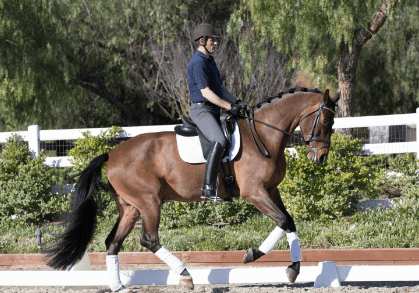How is dressage scored in competitions?

Dressage, often described as a form of equestrian ballet, is a discipline where both horse and rider are judged on their ability to perform a series of predetermined movements. The scoring system in dressage competitions is unique and highly detailed, reflecting the precision, harmony, and difficulty of the movements executed. This article will delve into the intricacies of how dressage is scored in competitions, offering insight into the criteria, process, and nuances that define this elegant sport.
Understanding the Basics of Dressage Scoring
At its core, dressage scoring is about assessing the quality of performance. Each movement in a dressage test is assigned a specific score, which is combined to give an overall total. The scores are given by judges who are positioned at different locations around the dressage arena, ensuring a comprehensive view of the performance.
The Role of Judges in Dressage Scoring
Number of Judges: In dressage competitions, there can be anywhere from one to seven judges, depending on the level of the event. At international and Olympic levels, the higher number of judges helps ensure a more balanced and accurate assessment.
Judges’ Positions: The judges are positioned around the dressage arena at specific points (e.g., at C, E, H, M, B). This allows them to view the horse and rider from multiple angles, ensuring a fair evaluation of their performance.
The Scoring Scale: From 0 to 10
Dressage scores are given on a scale of 0 to 10, with half-points also being used for finer differentiation. Each score has a specific meaning:
0: Not performed
1: Very bad
2: Bad
3: Fairly bad
4: Insufficient
5: Sufficient
6: Satisfactory
7: Fairly good
8: Good
9: Very good
10: Excellent
Key Criteria for Scoring
Accuracy: One of the primary criteria for scoring is the accuracy of the movements. This includes the correct execution of the patterns, precision in the transitions, and adherence to the prescribed test.
Rhythm and Regularity: Judges look for a consistent and regular rhythm in each gait. The natural rhythm should be maintained throughout the performance, regardless of the movement being executed.
Suppleness and Elasticity: The horse should demonstrate suppleness in its movements, with a fluid and elastic quality that shows ease and comfort in performing the required tasks.
Contact and Connection: The horse and rider should maintain a steady and soft contact with the bit, ensuring a harmonious connection. The horse should not appear resistant or tense.
Impulsion and Engagement: Impulsion refers to the horse’s ability to generate power from its hindquarters. Judges look for an active engagement of the hind legs, a crucial aspect for higher-level movements.
Collection and Extension: The horse should demonstrate its ability to collect and extend its strides appropriately, according to the requirements of the test.
Rider’s Position and Aids: The rider’s ability to effectively communicate with the horse using subtle and almost imperceptible aids is also evaluated. A correct, balanced seat and harmonious aids are crucial.
The Collective Marks
In addition to the individual movement scores, riders also receive collective marks. These marks assess the overall impression of the ride, including the rider’s position and seat, the horse’s gaits, impulsion, and submission, and the harmony between horse and rider.
Calculating the Final Score
To calculate the final score, each movement’s score is multiplied by its coefficient (if applicable), and these are summed together. This total is then divided by the total possible points and multiplied by 100 to give a percentage. The higher the percentage, the better the performance.
The Role of Penalties and Errors
Errors in a dressage test, such as missing a movement or performing it incorrectly, result in penalties. These penalties are deducted from the final score and can significantly impact the overall standing of the rider in the competition.
Conclusion
The scoring system in dressage is a meticulous and comprehensive process that evaluates a wide range of factors. It requires judges to have a deep understanding of horse movement, training, and rider skill. For competitors, understanding this scoring system is crucial for training and performance, as it provides clear guidelines on what is expected in the arena. Dressage scoring not only measures the technical skills of horse and rider but also captures the artistry and harmony of this elegant equestrian discipline. Through this detailed scoring system, the sport of dressage celebrates the beauty, precision, and grace that define its essence.





